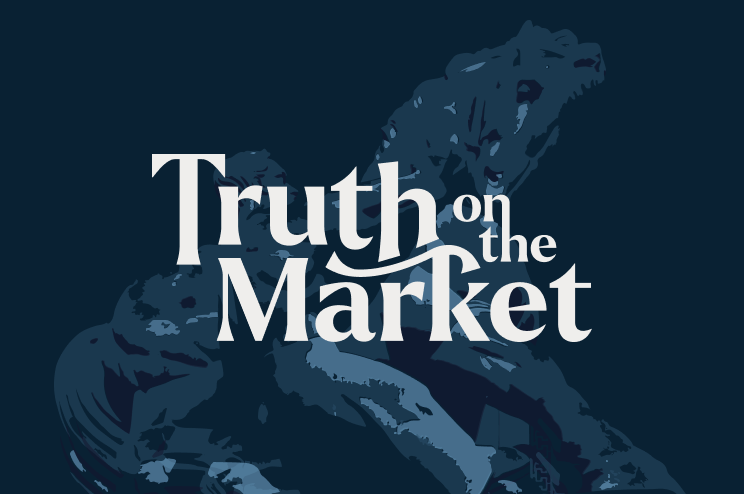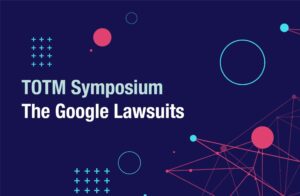Showing results for: “Valid C1000-170 Study Materials 🕗 C1000-170 Latest Exam Answers 🏮 Trusted C1000-170 Exam Resource 🦍 Search on 【 www.pdfvce.com 】 for 【 C1000-170 】 to obtain exam materials for free download 🐀Valid C1000-170 Dumps Demo”
A quick note on Intel
I am curious about something. AMD and Intel have been competing head to head for more than 15 years, at least since AMD released its Intel 386 clone in the early 90s. In that time, inarguably, microprocessor prices have plumeted and processing power and other features have increased dramatically (I’m aware that we don’t know ... A quick note on Intel
Section 2 Report Quick Reactions
A few quick reactions to the repudiation of the Section 2 Report, and more importantly, what it means for the future of monopolization enforcement: First, the most disappointing thing about the withdraw of the Report and this announcement is that it is incredibly dismissive about the long hours of work put into this project by ... Section 2 Report Quick Reactions
Neo-Chicago Meets Evidence-Based Antitrust
Dan Crane has an excellent essay (“Chicago, Post-Chicago and Neo-Chicago“) reviewing Bob Pitofsky’s Overshot the Mark volume. Here’s Dan’s brief abstract: This essay reviews Bob Pitofsky’s 2008 essay compilation, How Chicago Overshot the Mark: The Effect of Conservative Economic Analysis on U.S. Antitrust. The essay critically evaluates the book’s rough handling of the Chicago School ... Neo-Chicago Meets Evidence-Based Antitrust
Patent Holdup, Antitrust and Innovation: Harness or Noose?
Expanding on the themes in this post from the TOTM symposium book review of Professor Carrier’s new book on “Harnessing the Power of Intellectual Property and Antitrust Law” to encourage innovation, I’ve posted an essay co-authored with a very talented former student and research assistant, Aubrey Stuempfle. The essay expands on some of the themes ... Patent Holdup, Antitrust and Innovation: Harness or Noose?
Reminder: Antitrust Economics 101 Starts Tomorrow
Tomorrow I’ll be starting a three week interactive web seminar on basic microeconomic concepts that form the basis of antitrust analysis. The lectures will be available through Competition Policy International’s Learning Center on three consecutive Wednesdays at 12 pm EST: May 13, 20, and 27th. CLE credit is available for practicing lawyers. The courses will ... Reminder: Antitrust Economics 101 Starts Tomorrow
Coda: Varney withdraws Section 2 Report
I guess it comes as little surprise that Christine Varney has withdrawn the Section 2 Report. The comments made in the statement withdrawing the Report indicate . . . well, that Varney isn’t convinced by reading this blog, among other things. Coming on the heels of our Section 2 Symposium, the news is jarring, although ... Coda: Varney withdraws Section 2 Report
Section 2 Symposium: Wrap Up
We would like to thank all of our participants and commenters for an outstanding symposium. This was a truly impressive collection of commentaries on Section 2 and the Section 2 Report, and it should stand for some time as a useful, interesting and provocative collective statement on the issues. For easy reference, you can access the ... Section 2 Symposium: Wrap Up
Section 2 Symposium: David Evans on ‘Tying as Antitrust’s Greatest Intellectual Embarrassment’
I’d like to propose a contest for the greatest intellectual embarrassment of antitrust. Let me name the first contestant—tying, which some of you know has been one of my favorite for years. Here’s why. First, there is no persuasive theoretical or empirical evidence that tying is a business practice that is likely to harm consumers. ... Section 2 Symposium: David Evans on ‘Tying as Antitrust’s Greatest Intellectual Embarrassment’
Section 2 Symposium: Alden Abbott on the International Perspective
As I indicated in my prior blog entry, U.S. competition policy vis-à-vis single firm conduct (“SFC”) is best viewed not in isolation, but, rather, in the context of other jurisdictions’ SFC enforcement philosophies, and efforts to promote greater SFC policy convergence worldwide. Given the proliferation of competition law regimes, firms that do business in multiple ... Section 2 Symposium: Alden Abbott on the International Perspective
Section 2 Symposium: Bill Page on Microsoft’s ‘Forward-Looking’ Monopolization Remedy
The DOJ’s Section 2 Report speaks in general terms about the costs and benefits of various remedies for monopolization. It prefers “prohibitory” remedies, but holds open the possibility of “additional relief,” including “affirmative-obligation remedies. The Report specifically mentions the protocol-licensing requirement of the Microsoft final judgments (§ III.E, entered in November 2002) as an example ... Section 2 Symposium: Bill Page on Microsoft’s ‘Forward-Looking’ Monopolization Remedy
Section 2 Symposium: Tim Brennan on the Relationship Between Regulation and Antitrust
When I first started working in antitrust at the Justice Department over thirty years ago—there’s a hard reality to accept—the Antitrust Division was then embroiled in an effort to reform the regulation of oil pipelines. The argument on this now obscure issue was that effective prevention of the exercise of market power by natural monopoly ... Section 2 Symposium: Tim Brennan on the Relationship Between Regulation and Antitrust
Section 2 Symposium: Herbert Hovenkamp on Patents and Exclusionary Practices
One interesting aspect of the DOJ Report on Section 2 is the scant, episodic treatment of IP issues. The Report rejects the presumption of market power for patent ties (p. 81); has a very brief discussion of refusal to license patented parts in which it properly rejects the reasoning of the Ninth Circuit’s Kodak decision ... Section 2 Symposium: Herbert Hovenkamp on Patents and Exclusionary Practices





